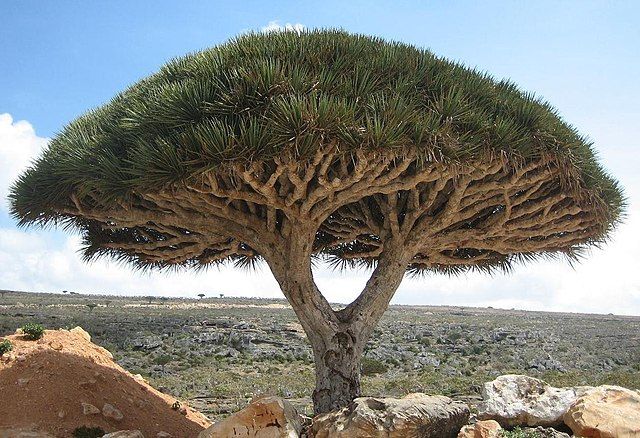Where Does Dragon Blood Scent Come From?
Dragon’s blood is a deep red resinous material that has been used for centuries for its mystical properties as well as in perfumes, incense, and other products. The term “dragon’s blood” refers not to the actual blood of dragons (which are mythical creatures), but to the deep red sap or resin that is harvested from various palm trees and other plants. This resin has a rich, spicy, slightly sweet scent that has been highly prized for use in fragrances, particularly woody and oriental perfumes.
Dragon’s blood resin has a long history of use dating back to ancient times. Ancient cultures believed it had magical powers and used it in rituals, ceremonies, and folk medicine. Today it remains popular in incense and as an ingredient in fragrances due to its mystical associations and rich, luxurious scent profile. Though the original botanical sources of dragon’s blood are threatened, the scent continues to be reproduced synthetically in perfumes and fragrances seeking to evoke exotic, mystical allure.
Origins
Dragon’s blood refers to the bright red resin obtained from various plant species, not real dragons. Some of the main sources of dragon’s blood include:
The dragon’s blood tree, Dracaena draco, is native to the Canary Islands, Morocco, and Socotra. This palm-like tree secretes a red resin known as “dragon’s blood” which was highly prized in ancient times. (Plant of the Month: The Dragon Tree – JSTOR Daily)
The rattan palms Daemonorops species found in Southeast Asia also produce a red resin called dragon’s blood. Daemonorops draco is one of the main sources. The red sap or resin obtained from Daemonorops species has been traded in parts of Asia for centuries.
The South American tree Croton lechleri produces a red latex referred to as Sangre de Grado or dragon’s blood. The sap has a long history of medicinal use by indigenous peoples of the Amazon rainforest.
Some other plants that produce a red resin historically called dragon’s blood include Pterocarpus species like Pterocarpus officinalis found in Asia.
While originating from various plant sources, dragon’s blood resin was highly prized across continents throughout ancient history, but did not actually come from dragons.
Dracaena Draco
The Dracaena Draco, also known as the Canary Islands dragon tree, is an evergreen tree that is endemic to the Canary Islands, Cape Verde, Madeira, and locally in western Morocco. It grows slowly to around 10-15 m tall with a stout trunk and stiff, sword-shaped green leaves.

The Canary Islands dragon tree secretes a red sap or resin known as “dragon’s blood” when its bark or leaves are cut. This red sap was highly prized in ancient times as a pigment and has been used for dyes, paints, and cosmetics. It was also used medicinally and for ritual magic practices. The red sap can stain or dye wood and other materials.
To harvest dragon’s blood resin from Canary Islands dragon trees, small cuts are made in the bark of the tree. The red sap oozes from these cuts and then hardens into droplets or irregular lumps of deep red resin. This resin is then collected from the bark. The tree continues to live after sap extraction and can regrow bark over the cuts.
The Dracaena Draco is one of the sources of the dragon’s blood resin mentioned in ancient history, legends, and stories.
Daemonorops Draco
Daemonorops Draco is a species of rattan palm native to Southeast Asia, including countries like Indonesia, Malaysia, Thailand, and the Philippines. It grows abundantly in the dense rainforests of this region. Rattans are a unique group of palms that have extremely long stems with alternating thorns. These strong, flexible stems were traditionally used to make furniture, baskets, and other woven products in Southeast Asia.
Daemonorops Draco is highly valued for the resin found within its fruits. This resin is commonly known as “dragon’s blood.” To obtain the resin, the rattan fruits need to be harvested when they are ripe. The outer fleshy part of the fruit is removed, exposing the red resin beads embedded inside. The resin beads are then crushed and dissolved in water to produce the final dragon’s blood resin. This lengthy harvesting process is very labor-intensive. In the past, local communities would collect and process the resin to supplement their income. However, overharvesting has led to a decline in the natural population of this rattan palm. Sustainable harvesting practices need to be implemented to prevent this unique plant from disappearing.
Overall, the valuable dragon’s blood resin found within Daemonorops Draco stems from this rattan species that is endemic to the dense tropical rainforests of Southeast Asia. For centuries, local harvesters have tapped the resources of the jungle to obtain this precious red resin.
Croton Lechleri
One of the most common sources of dragon’s blood is the Croton lechleri tree, also known as the sangre de grado or “blood of the dragon” tree. This tree is native to the Amazon rainforest in South America (Luna Sundara). Croton lechleri is a medium-sized tree that can grow up to 30 meters tall in the rainforest. When the bark is cut or scraped, it produces a bright red sap known as dragon’s blood. This sap has been used for centuries by indigenous peoples of the Amazon for its healing properties.
The harvesting of dragon’s blood from Croton lechleri is done in a sustainable manner. Small incisions are made in the bark to collect the sap. The trees are left to heal and fully recover before being tapped again. This ensures a renewable supply of dragon’s blood that does not harm the ecology of the rainforest (Sacred Woods Essence). The bright red sap is valued for its many traditional uses and therapeutic properties.
Pterocarpus
Pterocarpus is a genus of flowering plants in the legume family that are native to tropical and subtropical regions of the Americas, Africa, Asia, and Australia. Several species are known as dragon’s blood trees because they produce a bright red resin called dragon’s blood.https://en.wikipedia.org/wiki/Pterocarpus_officinalis
In India, the most notable dragon’s blood species is Pterocarpus santalinus, known as red sanders. It is endemic to the southern Eastern Ghats mountain range and valued for its timber and medicinal resin.https://en.wikipedia.org/wiki/Pterocarpus_santalinus The red sanders tree has been overexploited leading to a decrease in natural populations. The IUCN Red List categorizes the species as endangered.
Dragon’s blood produced by Pterocarpus species has many traditional medicinal uses. It has been used as an astringent, antiseptic, hemostatic, and anti-inflammatory agent. The resin contains flavonoids with antioxidant properties and has shown promise in wound healing applications.https://en.wikipedia.org/wiki/Pterocarpus_santalinus
Other Sources
In addition to the major sources of dragon’s blood, there are some minor botanical sources that also produce the deep red resin:
The Pterocarpus indicus tree, native to southeast Asia, produces a dragon’s blood resin that has been used medicinally and as a dye. Research shows the resin from P. indicus contains antioxidant and antimicrobial properties (Source).
The Dracontomelon genus, especially D. dao, is another minor source found in tropical forests in southeast Asia. The resin has been used traditionally for wound healing and skin conditions (Source).
Certain species in the Croton genus, such as C. lechleri, produce a red sap that is considered a type of dragon’s blood. It has been used medicinally by indigenous cultures in South America (Source).
Scent Properties
Dragon’s blood has a rich, exotic scent profile that is often described as earthy, musky, and slightly sweet. The fragrance is complex and layered, with top notes of citrus and spice, middle notes of resinous woods and incense, and base notes of vanilla, amber, and patchouli.
Specifically, some of the fragrance notes commonly found in dragon’s blood essential oil or fragrance oil include orange, jasmine, rose, patchouli, anise, tonka bean, and balsam. The citrus notes provide a bright, uplifting quality, while the resins and woods create an earthy, oriental effect. The vanilla, amber, and patchouli notes in the base give it a sweet, slightly powdery drydown.
In terms of strength, dragon’s blood often has robust medium to high scent intensity. It has good lasting power and longevity when used in products like candles, soaps, perfumes, and more. The complexity of the fragrance tends to unfold over time, with the heart and base notes becoming more prominent as the top notes fade.
Uses
Dragon’s blood has been used for a variety of purposes throughout history, including as incense, varnish, in folk medicine, and in cosmetics.
As an incense, dragon’s blood is prized for its sweet, earthy aroma. The resin is often blended with other scents like frankincense or myrrh and then burned as incense sticks or cones. Burning dragon’s blood is thought to promote purification, protection, and healing (Tiny Rituals).
Dragon’s blood is also used as a varnish or pigment due to its rich red color. It was commonly used in 18th century Italian violin varnishes and is sometimes still used by luthiers today. The vibrant red color has also been used in artwork and paints (Healthline).
In folk medicine, dragon’s blood has many purported benefits, including wound healing, reducing inflammation, and alleviating gastrointestinal issues like diarrhea. It is commonly taken orally in liquid extracts or capsules (WebMD).
Lastly, dragon’s blood has begun being used in cosmetic products like soaps and creams. It is thought to help reduce acne, wrinkles, stretch marks, and other skin conditions thanks to its antioxidant content (Healthline).
Conclusion
In summary, dragon’s blood is a deep red resin that comes from several plant species, including the endangered Dracaena Draco tree. While dragon’s blood has many traditional medicinal uses, sustainable harvesting practices are crucial for ensuring these rare trees and plants can survive and thrive. Over-tapping and climate change threaten dragon’s blood producing species. Implementing careful monitoring, rotation of tapping sites, and involving local communities have proven effective for sustainable dragon’s blood production in places like Peru.
Dragon’s blood is a valuable resource, but preserving these amazing trees and plants should remain the priority. With care and stewardship, traditional medicinal uses can be maintained without endangering fragile ecosystems. More research and conservation efforts are still needed to protect dragon’s blood sources for future generations. When harvested sustainably, dragon’s blood provides many benefits to both local communities and the wider world.





